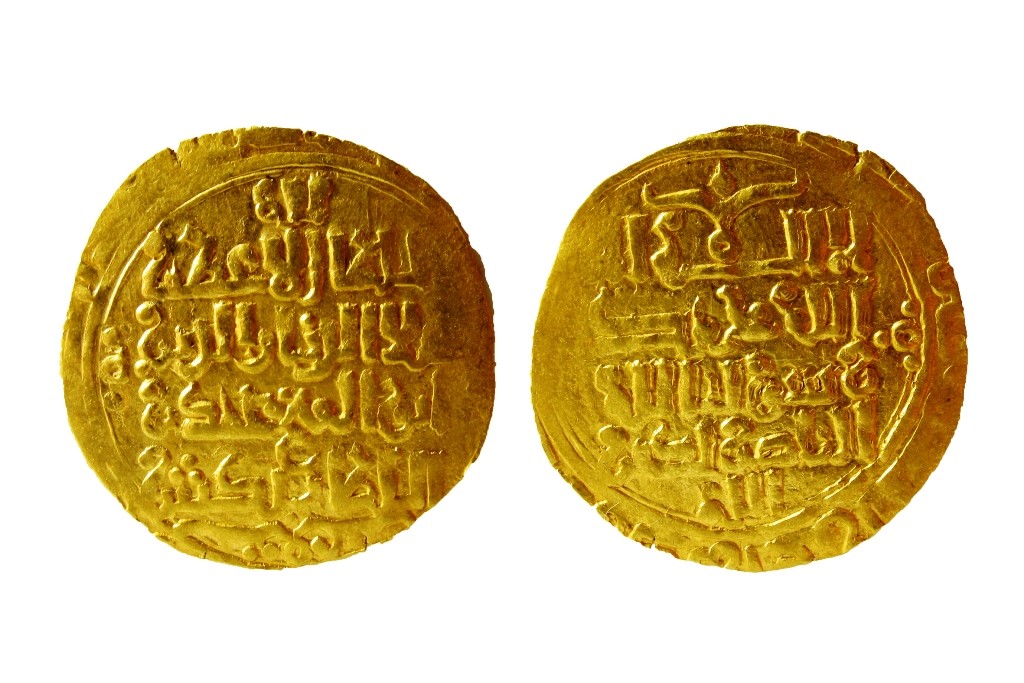ASTANA – Mangystau resident Mukagali Yerbozov found buried treasure this fall in the territory of the Mangystau region. The gold and silver objects included earrings, silver rings, about 20 gold coins and golden coin fragments.
“A similar treasure was found here for the second time. Part of the first treasure found in 2014 was mistakenly recognised as fake and fabricated on the territory of modern Uzbekistan… A few more coin fragments were found in an undisturbed state when observing the site. The authenticity of both treasures was then confirmed,” said regional archaeologist Andrey Astafiyev referring to the 22 12th-13th century gold coins Yerbozov found, reported lada.kz.
He added seven gold coins may belong to a local unknown ruler. The Mankyshlak town was likely the place where the coins were minted.
The archeologist noted the coins bear witness to the sovereign political and economic status of the town in the medieval era. The precisely ‘’fake’’ dinars status of the treasure is a unique object of historic and cultural heritage.
Studying Mangystau’s ancient settlements, ports and market sites is the main component of a vast research topic investigating the northern offshoot of the Great Silk Road that allowed uniting Asian and Eastern European countries. Astafiyev noted the topic was poorly studied by historians and archaeologists, according to the news website.
Based on field studies, Astafiyev attempted to reconstruct trade paths and their arrangement across the Mangyshlak peninsula. Despite the big volume of documented archaeological objects, the search and review of medieval ports is one of the prospective paths of future studies. Those ports were not only cargo terminal bases but also trade places for merchants who arrived on shore both by land and sea.
“For this reason, the prospect of discovering a new market site is a very important event in historic studies not only of Mangystau and Kazakhstan but also a part of a history of political, economic, trade and cultural ties of Europe and Asia. The terms of the treasures’ location and set of objects points at the sudden nature of their concealment,” said Astafiyev, reported lada.kz.
He added rapid scientific research needs to be done in the area where the treasure was found and security measures must be also arranged.
Yerbozov decided to wait for the results of the cost and historic value assessment of his findings. He plans to present the treasure to the museum of regional studies despite many offers to buy it.
According to Kazakhstan’s Civil Code, one who discovers a treasure has the right for a reward equal to 50 percent of the finding’s cost.
Yerbozov kept his findings for various years, including two ancient books in Arab language he located in 2014. He often goes on nature trips with his family and finds something every time.
“I look at everything through the eyes of my ancestors: where I would set the yurt, if I lived in a steppe, if there is water or what it means if a settlement was near here,” he noted, according to lada.kz.
Yerbozov often consults archaeologists. Many people in the Mangystau region find historically valuable objects, however, there are no local experts who could give historic and material evaluation to these types of findings, he said.
“If the government really offers good money for them, this would refill the funds of our museums. People would know more about the history of this area; this would trigger more interest for tourists. As a patriot of my country, I would want these gold products found to become the nation’s legacy and not be melted,” he added.



